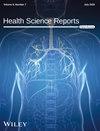Trends and Developments in Vulvar Lichen Sclerosus Research
Abstract
Background
Despite the prevalence of vulvar lichen sclerosus (VLS) as a chronic skin disease in clinical settings, there is a notable absence of a comprehensive bibliometric analysis summarizing the existing literature on this topic. The aim of this study is to offer clinicians, researchers, and other interested parties an up-to-date overview of the research status and emerging trends in VLS through the use of bibliometric analysis.
Methods
The present research employed a thorough examination of the Web of Science Core Collection to identify publications pertaining to VLS within the time frame of January 1, 1994, to December 31, 2023. A total of 1698 publications were scrutinized utilizing Microsoft Excel software and various visualization tools, including CiteSpace, VOSviewer, and Pajek, to discern specific characteristics.
Results
The current research encompassed a total of 1,698 articles pertaining to VLS. The analysis of citation bursts and co-citation patterns has revealed a high level of confidence in the effectiveness and safety of topical corticosteroids for the treatment of VLS, establishing them as the preferred primary treatment for this condition. Since 2018, there has been a significant increase in VLS publications, with the United States and United Kingdom emerging as leading contributors. Research has moved from examining past pathological changes like “epidermal atrophy” to focusing on “long-term treatment management,” and improving “quality of life”. The exact mechanism of VLS remains unclear, but it is linked to cytokine immune regulation, oxidative stress, and potential epigenetic changes or genetic mutations in susceptible individuals. It could also develop into vulvar squamous cell carcinoma.
Conclusions
Institutions are expected to allocate more resources for VLS prevention and long-term management.


 求助内容:
求助内容: 应助结果提醒方式:
应助结果提醒方式:


